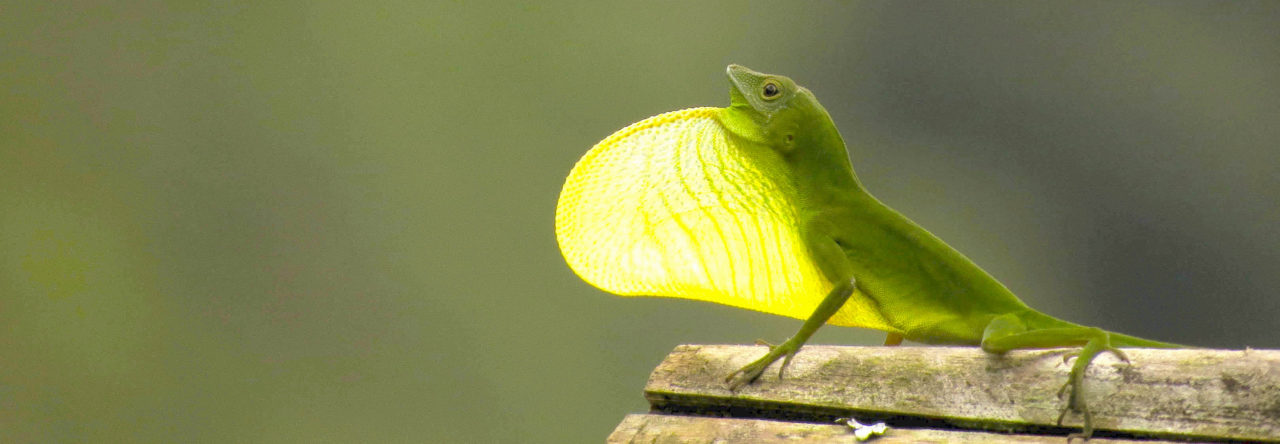
Anolis bartschi. Photo by Shea Lambert
Anolis bartschi is one of the many spectacular anoles of Cuba. Hailing from a restricted area in western Cuba, little is known about this species (though see a previous Anole Annals dispatch).
A new paper just out in Phyllomedusa provides new diet data. Here’s some details:
Trophic ecology and morphology of Anolis bartschi (Squamata: Dactyloidae) in Viñales National Park, Cuba
L. Yusnaviel García-Padrón, Geydis León Amador, Mariela Mezquía Delgado, and Yusvel Martínez Serrano
Abstract
Trophic ecology and morphology of Anolis bartschi (Squamata: Dactyloidae) in Parque Nacional Viñales, Cuba. Little is known about the trophic ecology of most anoles of Cuba. Morphology is directly related to ecological functions in lizards, such as feeding strategies, interspecific competition or energetic demands linked to reproduction. Anolis bartschi is a regionally endemic species, restricted to karstic hills of western Cuba. Here, we offer new insights into the trophic ecology of this species, and its relation to head morphology. We captured 131 adults; males were larger than females in size and head width. Most of them had prey in their stomachs. Males consumed more prey than females, but the latter consumed larger prey. Prey overlap within sexes was detected in the dry season, but trophic segregation occurred in the rainy season. Hymenoptera was the most frequently consumed prey in both sexes. In addition, females ate Blattodea and Coleoptera, and males consumed more Diptera. We suggest that this lizard prefers sedentary rather than mobile prey. According to our dataset and field observations, A. bartschi is a bimodal forager lizard, but research on temporal (daily and annual) variation in diet is recommended for a proper forage classification of this lizard.












